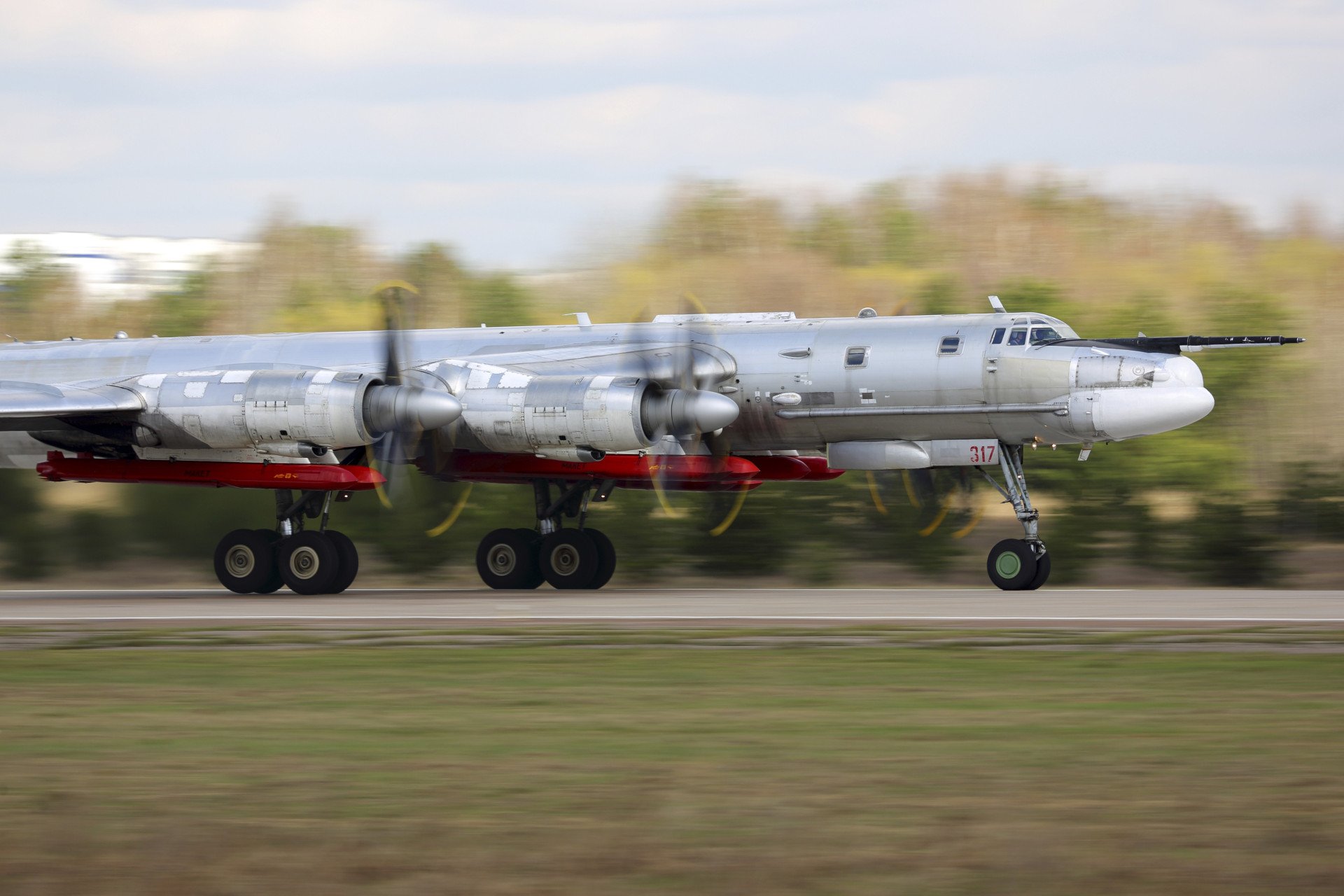- Category
- Latest news
Russian Tu-95s and Tu-160s Fly Heaviest Raid in Months—But Ukraine Renders It a Flop

Russia’s overnight missile barrage on Ukraine on June 6, which the Kremlin touted as a retaliatory strike for recent Ukrainian attacks on its strategic aviation assets, appears to have backfired — both militarily and symbolically.
Russian forces launched 36 Kh-101 cruise missiles from their long-range Tu-95MS and Tu-160 bombers, alongside a broader wave of 407 Shahed-type drones, six ballistic missiles (presumed to be from Iskander or KN-23 systems), and two R-500 cruise missiles, according to a detailed report from Defense Express on June 6.
But the centerpiece of the attack—the cruise missile strike—was meant to demonstrate strength and resolve in response to Ukraine’s successful “Spider Web” operation, which severely damaged Russia’s long-range bomber fleet.

Instead, the operation exposed how strained Russian strategic aviation has become.
Ukrainian defense sources told Defense Express that Russia was only able to scramble seven strategic bombers — five Tu-95MS and two Tu-160s — for the strike.

Crucially, these aircraft were loaded nearly to their full payload capacity, carrying on average five missiles each, in stark contrast to previous strikes where bombers often carried just one to three missiles. This marks the first such maximal loading since August 2024, when 11 Tu-95MS aircraft fired 77 Kh-101s in Russia’s then-largest combined strike.
Even so, the effort fell short. Ukrainian air defenses intercepted 30 of the 36 Kh-101 cruise missiles, and both R-500s were also shot down. Of the six ballistic missiles, four were intercepted, and two failed to reach their targets.

This aggressive bomber loading indicates a shift from Russia’s previous strategy of conserving airframe hours and extending the service life of its limited fleet.
Notably, the Tu-160—Moscow’s most advanced strategic bomber—was used in two consecutive strikes, on May 26 and June 6, 2025.
Before that, the aircraft had been used in combat only sporadically since 2023: on May 18, 2023, and November 17, 2024. The back-to-back deployment suggests the Kremlin is increasingly pressed to maintain the scale and optics of its long-range strikes.

“If Russia wants to sustain this level of intensity and firepower using air-launched cruise missiles,” Defense Express noted, “it has no real alternatives in the short term other than to repeatedly deploy its small bomber fleet at near-maximum capacity.”
As for the drone element of the June 6 strike, Russia launched an unprecedented 407 Shahed-type UAVs and decoys. Ukraine’s defenders neutralized 368 of them — 199 were directly shot down, while 169 were suppressed or lost by electronic warfare.

Earlier, reports emerged that Russia has redeployed a Tu-160 strategic bomber to one of its most remote airbases in Anadyr, located in the Chukotka region near the Bering Sea.
This marks the first recent appearance of a Tu-160 at the Anadyr airbase, with reports the bomber was relocated there after Ukraine’s June 1 Operation Spider Web—a coordinated drone strike that damaged or destroyed dozens of Russian strategic aircraft across multiple airfields.






